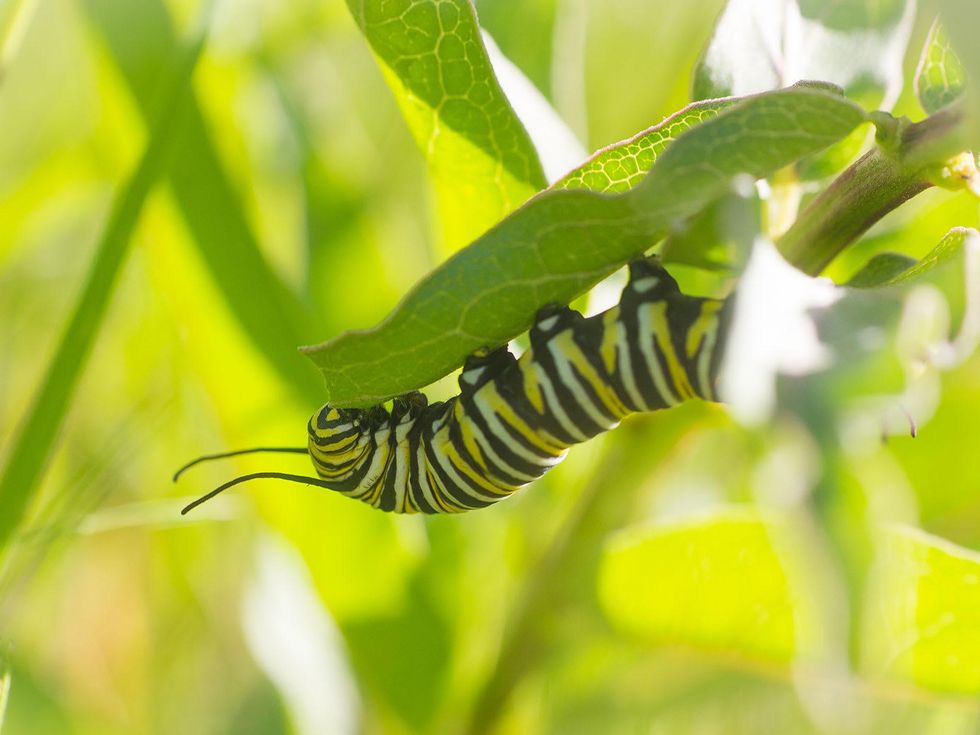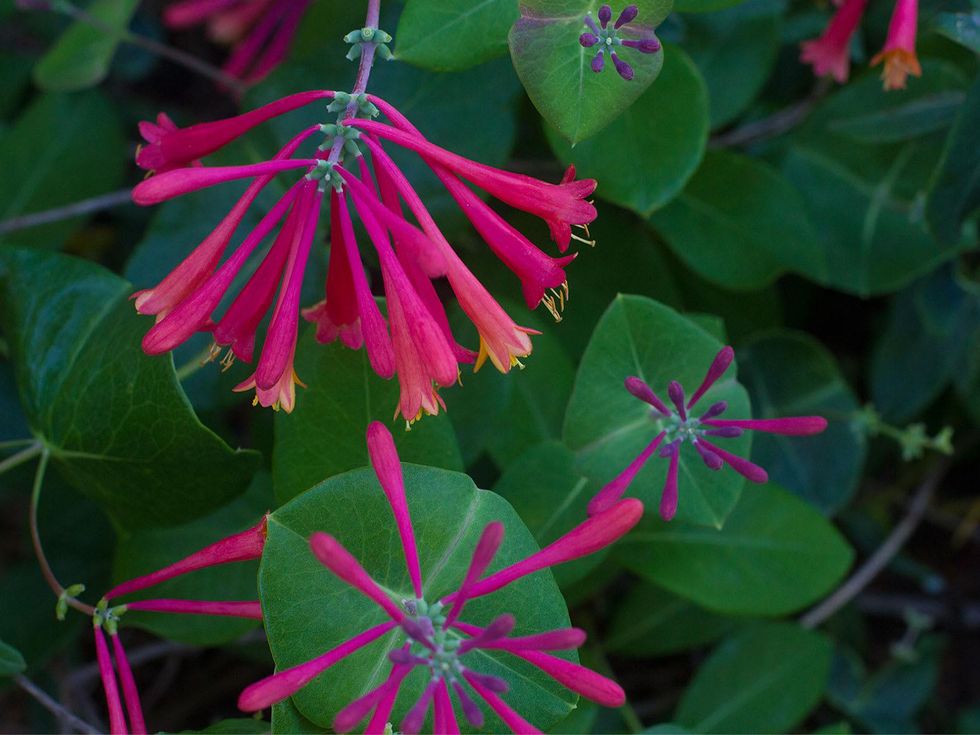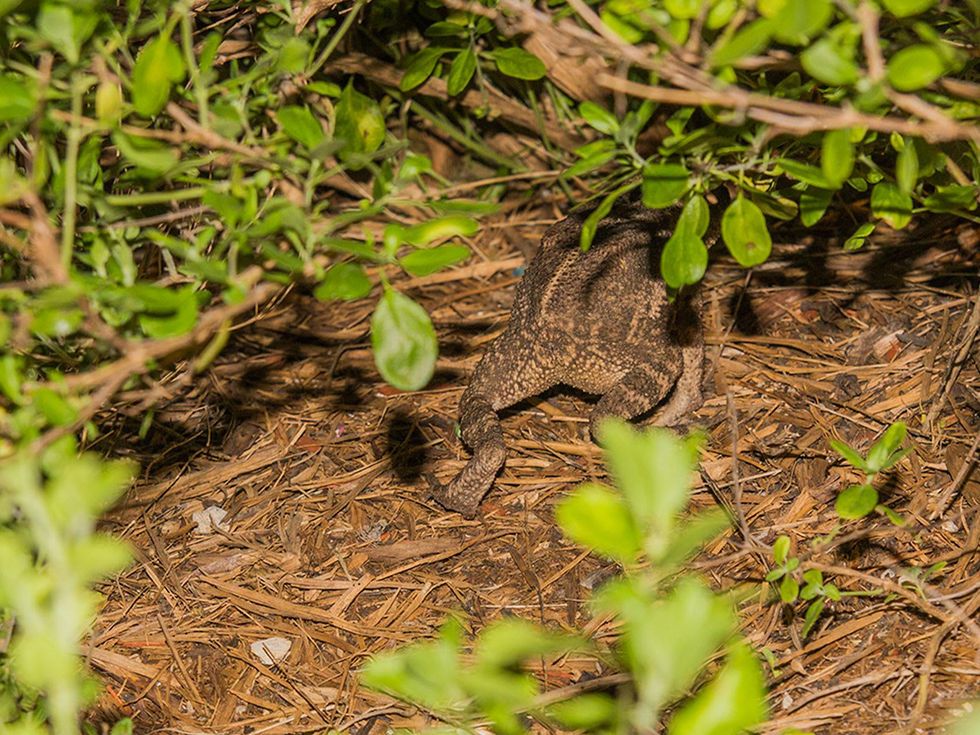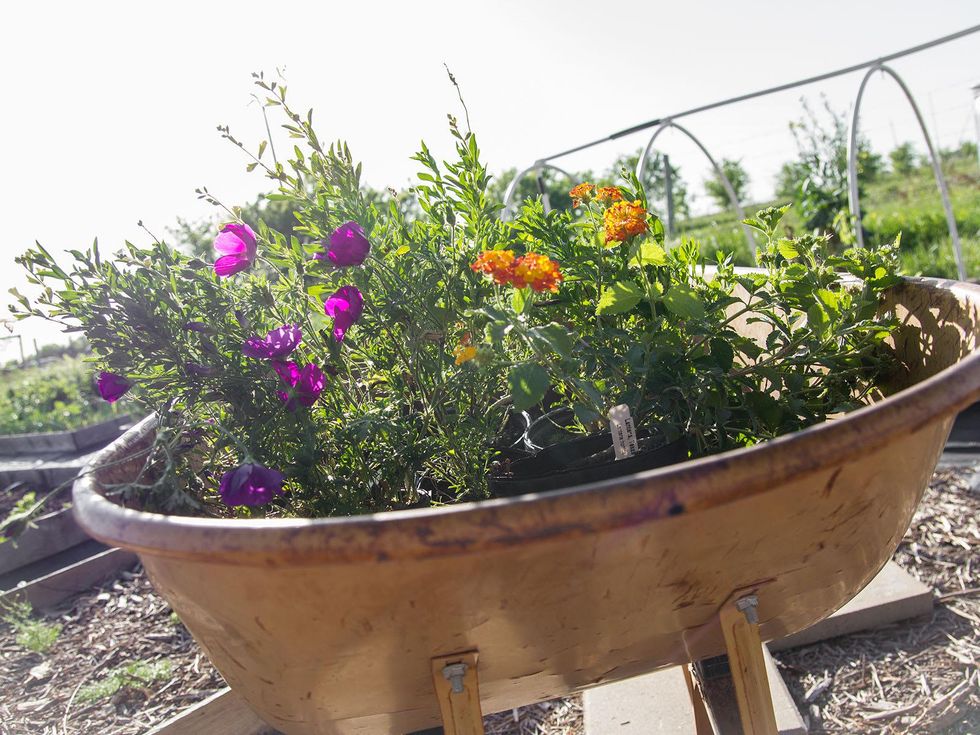The Farmer Diaries
Texas farmer uses native flowers to lure in pest-fighting menagerie
Last year, hoping to dress up the appearance of some metal buildings on my property, I planted some native Texas perennial flowers — and unwittingly ended up with my most successful garden ever.
I expected that their blooms would attract pollinators, and that came true. They provided a continuous supply of flowers that attracted bumblebees, hawk moths, hummingbirds and butterflies, who would then venture over to my raised beds and pollinate my crops.
But they also attracted a menagerie of other beneficial creatures that helped eliminate one of the most persistent threats to my tomato plants.
The first time I saw a wasp land on a kale plant, grab a caterpillar and drag it away, I realized I had a new pest control ally.
First, there were the paper wasps. Lured in by the nectar, the wasps found my new landscaping a suitable place to rear their young. They formed their papier-mache nests under picnic tables and among tree branches.
Adult wasps feed on nectar, but young wasps require protein, so the adults went to my crops to find an obvious source: caterpillars. The first time I saw a wasp land on a kale plant, grab a caterpillar and drag it away, I realized I had a new pest control ally. The wasp is as beneficial to the farmer as the ladybug.
Second, hover flies appeared in my garden for the first time that I've noticed. Sporting iridescent, transparent wings, these small insects look like a cross between a bee and a fly. Capable of hovering over flowers, they're important pollinators, drawn in by the beckoning native flowers.
Their young have a voracious appetite for aphids and caterpillars. It's hard to be a caterpillar in an organic garden.
There were other beneficial insects new to the garden that I'd not seen enough before to count on, such as assassin bugs and lacewings. I surmise that more have been attracted that I have yet to identify, and more will come this year as the plants become established.
The native perennials also provided a home to native toads. Dense foliage over thick mulch creates the perfect daytime hideout for these amphibious garden allies, and I welcomed the new residents.
During the day, I'd bump into them, sitting in the shade of the landscaping and waiting out the heat. At dusk, while completing my watering chores, I'd spot them ready to spend the night gorging on whatever was too slow to crawl away from their rapid-fire tongues.
But the major gardening benefit was the elimination of the tomato horn worm. Anyone who's seen the infamous horn worm does not soon forget the sight.
Most years, I lose tomato plants to horn worms. But they have found something better: sacred datura plants.
About the size of a breakfast link, tomato horn worms are composed of about a half dozen green, pudgy segments, each with a pair of legs. Their horn is at the tail, not the head. They can strip down a tomato plant to a bare stalk in just a few days.
Most years, I lose a tomato plant or two to the worms; last year, not a single plant was lost.
The reason: The fat little guys found something better: sacred datura plants. At night, these relatives of tomatoes produce huge blooms the size of a dinner plate. Their fragrance is inescapable, even 100 yards away.
Apparently, when horn worms have the choice between tomatoes and native datura, they choose the datura. They ate it to the ground, just as they would a tomato plant. And because the datura and the worm are a natural pair in the same ecosystem, the datura bounced right back with new shoots and leaves, more dense and healthy than before.
Although their appetite for tomato plants can be destructive, horn worms transform into moths that look, fly and feed just like hummingbirds, making them potentially important pollinators that shouldn't be killed. Datura in the landscape is the solution to the dilemma between crop protection and species protection.
Building on the success I've had with my native Texas perennials, I've decided to expand the planting area. Pests don't bother them, and they require almost no maintenance. I watered them three or four times throughout the whole summer, and this was in their first year, before they were fully established.
They save water and are prettier than the exotic, tropical landscaping plants you might buy that need weekly deluges. These are my favorites so far:
- Texas lantana. Golden flowers top this shrubby plant that grows back year after year from the roots. Herds of butterflies hang out on them all day.
- Salvia greggi. There are many salvias, but salvia greggi is a Lone Star evergreen that flowers all summer and addicts hummingbirds to its nectar.
- Texas coral honeysuckle. Vibrant blooms decorate the dark green foliage of a plant that can either grow as a vine or bush. When its trumpet-shaped flowers open, it becomes a natural hummingbird feeder, without the need for a daily cleaning.
- Pink guara. If a small water feature spurted up dark green water tipped with pink droplets, it would look like pink guara. As anything that flowers does, it attracts everything that's beautiful among birds and insects.
- Sacred datura. Massive blooms open up each night as the sun sets; the unfurling of the flowers happens fast enough to watch, if you're patient. I've actually tried to watch the flower open, gotten up to get a snack, and returned minutes later to find that I missed the show. I always imagine that the flowers taste like marshmallows, but the whole plant is poisonous if eaten.
- Flame acanthus. Just as summer starts getting old with nothing left to show for the year, flame ancanthus bursts out with red blossoms, flowering when little else does.
- Frog fruit. Creates a carpet of green that never needs to be mowed. Its flowers are almost undetectable, but the butterflies landing everywhere on it are a sight to see.
- Milkweed. Essential for the survival of the monarch butterfly, a major pollinator. Conventional farming's use of weed killer has put this plant —and therefore the butterfly — in peril. It's not easily transplanted, but it can be sown from seed sown in the winter.
These plants have boosted my garden's natural ecosystem and helped get the upper hand on pests. They've also given me the chance to get close to toads, birds, bees, butterflies and droves of other wild creatures that enrich my life in countless ways.




